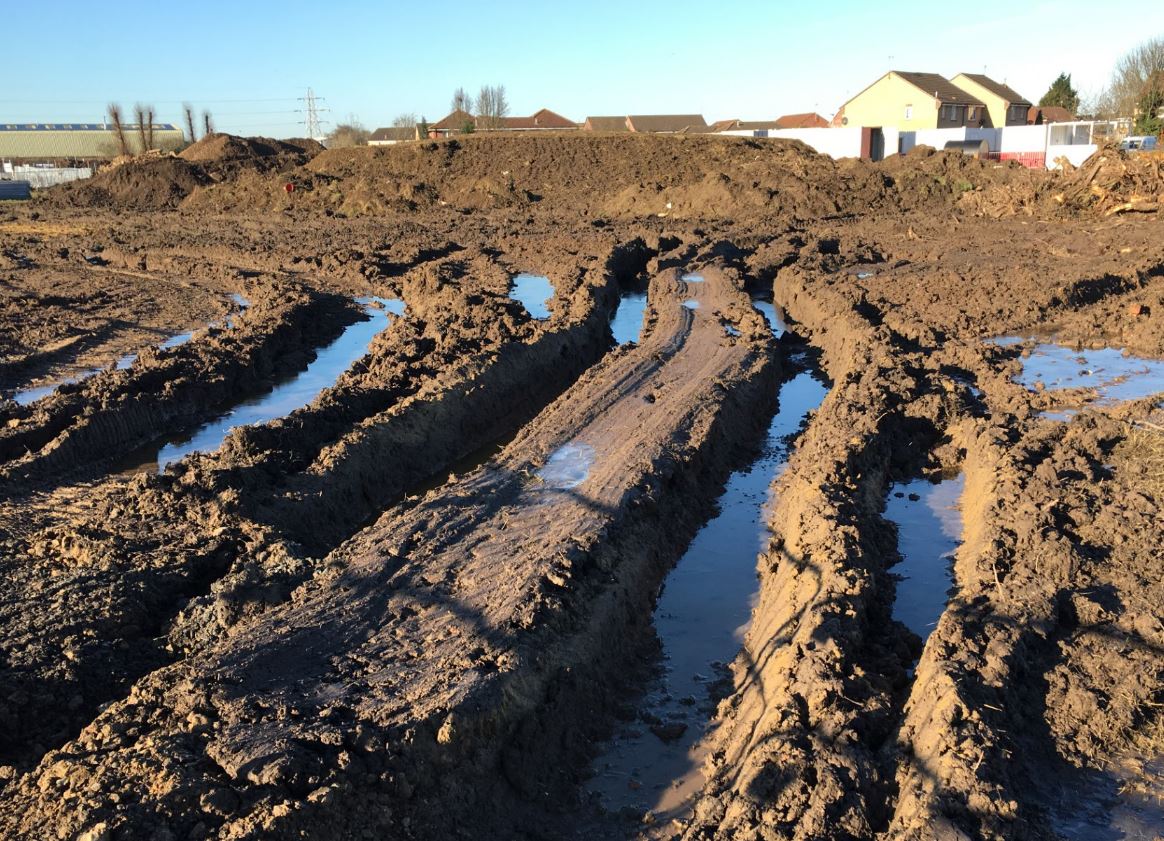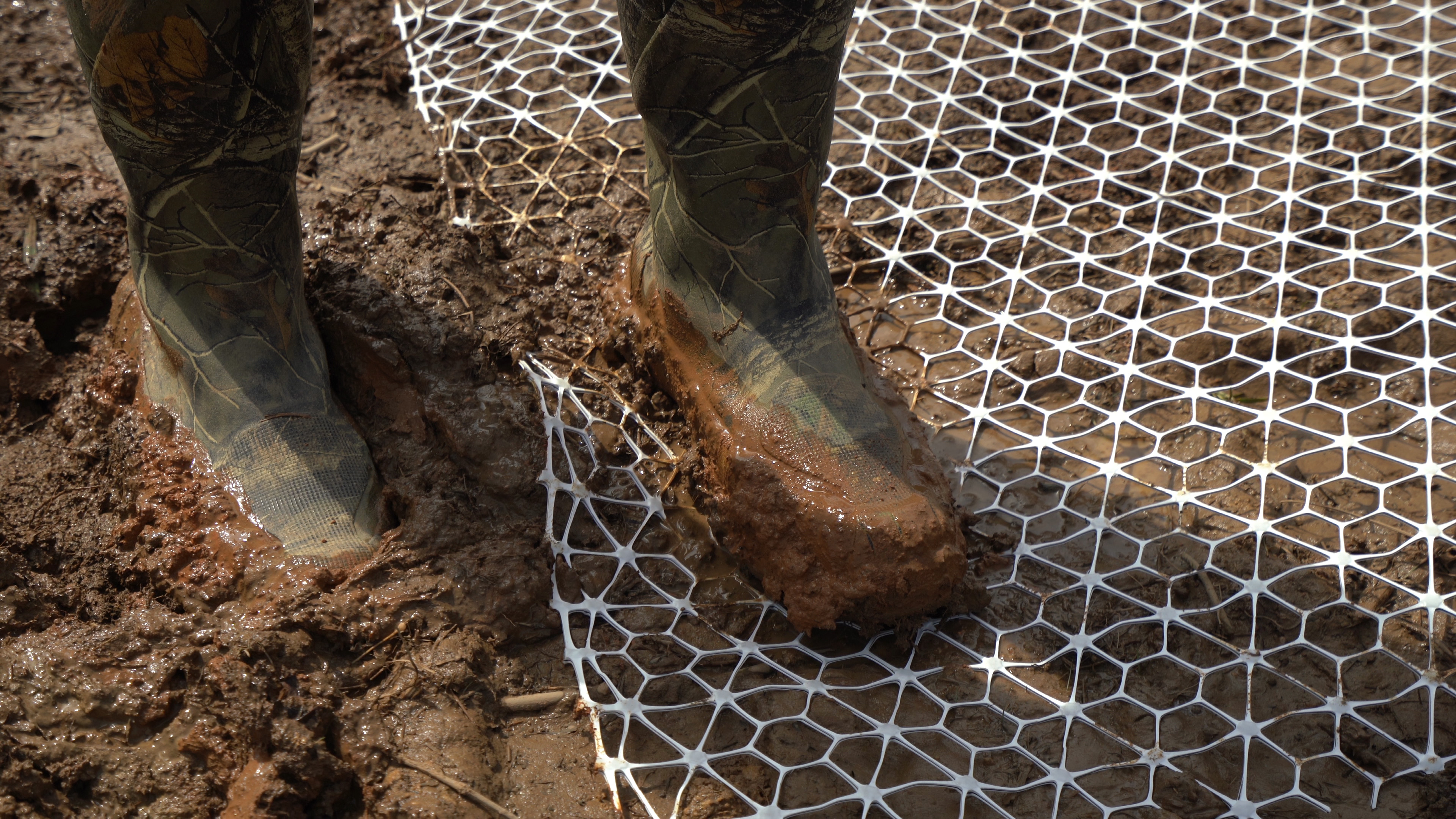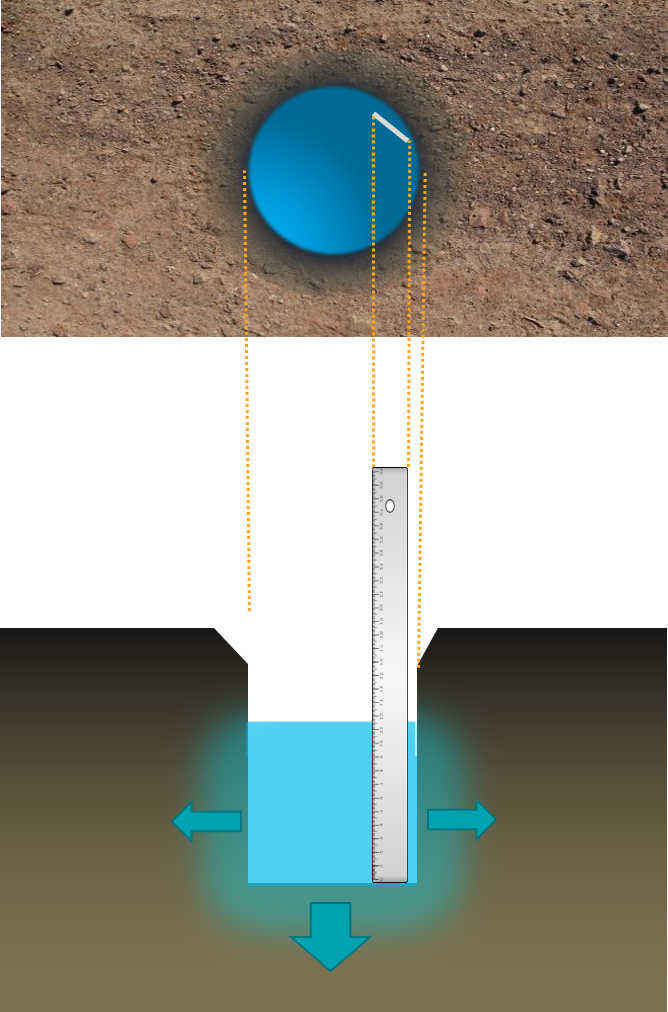The permeability of soils explained
by Kasia Zamara, on november 17, 2022
Soil permeability is a measure of how quickly water passes through a soil. This is important information for any engineering structure located on, in, or under the soil. The presence of water affects soil properties. Water passing into or through a soil will impact upon the soil strength and stresses. Leakage rates through earth dams or storage ponds clearly relate to the soil permeability, but the settlement and stability of earth embankments are also highly dependent upon foundation soil permeability. The effectiveness of side drains along a haul road will also depend upon the permeability of the subgrade soil. Soil permeability is therefore important.
Over the course of this post, we'll look at:
- What does permeability mean?
- What is the permeability of soil?
- What influences the permeability of soil?
- Why is soil permeability an important consideration?
- Soil permeability tests
- Typical values of permeability for different soil types
- Accounting for soil permeability in construction
If you're particulary interested in one section, use the links above to navigate to it.
What does permeability mean?
The velocity of flow of a fluid through a porous medium is directly related to the hydraulic gradient causing the flow. This is known as Darcy’s Law. Put simply, water will only flow through a soil from A to B if there is a pressure difference between A and B. The velocity of flow is directly related to the magnitude of that pressure difference. The temperature and viscosity of the fluid has an effect, as does the particle size, void content, and composition of the medium.
The rate of flow per unit area is referred to as permeability, or sometimes as hydraulic conductivity.
What is the permeability of soil?
For soils we are usually concerned with water flow. The permeability of a soil is the capacity of the soil to allow water to pass through it. Soil permeability is usually represented by the coefficient of permeability (k), where k is the rate of flow of water per unit area of soil when under a unit hydraulic gradient.
.png)
Low soil permeability can lead to water ponding and weakening of the subgrade during construction.
What influences the permeability of soil?
Soils are made up of particles with interconnecting voids in between. These voids can be filled with air or water. If all voids are filled with water, the soil is said to be saturated. If only a proportion of the voids are water filled, the soil is said to be partially saturated. Water does not pass through soil particles, it flows through the voids between particles. Water can pass through these interconnecting voids when a pressure difference exists due to a difference in water level (hydraulic head), or from the suction of plant roots as an effect of transpiration. The shape and texture of the particles, the relative volume of voids in the soil (voids ratio) and the degree of saturation all have an effect on permeability. Compaction will clearly have an influence, as it reduces the voids ratio of the soil.
Stratification of the soil also influences permeability. Where soils are built up in layers, during construction or by deposition, it is likely that permeability will be greater horizontally than vertically across the layer boundaries.
.png)
Saturated low permeability soils present problems for road – use of a stabilisation geogrid such as Tensar InterAx, protects the weak subgrade and enables placement and compaction of the subbase above.
Why is soil permeability an important consideration?
For earth structures, such as dams or retention ponds, the rate of leakage is clearly important, but permeability is also of critical importance for the stability of embankments. As soils are loaded, water within the soil is subject to an increase in pressure, referred to as pore pressure. Increased pore pressure reduces particle to particle contact and reduces soil strength. The excess pore pressure slowly dissipates as water flows out of the soil and the soil consolidates. The rate of pore pressure dissipation will be influenced by the permeability of the soil. Low permeability soils will take longer to consolidate. This has an impact on the rate of strength gain and also the rate of settlement, both of which are important for all earth structures. For roadways the permeability of the subgrade soil will have a marked effect on the subgrade strength during and after construction. A saturated soil strength may therefore be more appropriate for road design, particularly during the construction phase.
Soil Permeability Tests
Soil permeability is typically obtained from samples taken to the laboratory. There are two types of laboratory test: Falling Head Test and Constant Head Test. Standard test protocols are available, such as ISO. 17892-11:2019.
Falling Head Test
In this form of test the differential pressure (the head) through the sample is allowed to decrease as water infiltrates the sample. Thus there is diminishing pressure over the course of the test. This type of test is generally limited to fine-grained soils
Constant Head Test
In this test the differential pressure (the head) across the sample remains constant throughout the test. This test is equally valid for gravel, sands and clay soils.
Field Testing
Field testing can also be carried out. These are usually simple percolation tests where a hole is bored and filled with water. The time for the water level to drop is then noted as an indicator of permeability. More reliable field test methods are available, such as the pump test where water is pumped from a borehole while hydraulic head measurements are made from a series of adjacent holes to determine the subterranean hydraulic surface profile during pumping, and from that calculate a value of permeability.

Simple Field Percolation Test – measuring the rate of drop in water level in an accurately sized hole enables calculation of saturated soil conductivity, an indicator of soil permeability.
Field tests are more likely to provide more accurate indication of the permeability than laboratory tests, which may overestimate the value (indicate much lower permeabilities than the field tests). The main reason for it is that field tests would work on a large sample where ‘macro permeability’ through layers natural fissures and soil cracks may occur. Laboratory size samples will not be large enough to become a representative of the actual layer variability. If soil permeability is a driving parameter in your design but your sources of information might be questionable, it is advisable to run a sensitivity checks to verify how changes in soil permeability will affect your design.
Typical values of permeability for different soil types
While the ability of a particular soil type to transmit water will vary in-situ due to the influence of compaction and saturation, the coefficient of permeability measured under standard laboratory test conditions does enable a hierarchy of soil types to be made. The table below lists soils in order of reducing permeability (k, measured in m/sec)
Accounting for soil permeability in construction
Soil permeability will be a major consideration for the design of earth dams and berms, where the long-term influence of water flow will be considered from the perspective of seepage, but also for an understanding of the equilibrium stress state of the embankment and foundations.
Engineers designing embankments over weak soils will also need to consider the influence of foundation soil permeability on settlement rates, settlement profile and bearing capacity.
When constructing embankments over low permeability, low strength soils, the increased loading raises pore pressure in the foundation soil. This in turn reduces bearing capacity of the soil and stability of the embankment being constructed. The maximum speed of embankment construction is therefore dictated by the rate of pore pressure dissipation, and that is a function of permeability. To accelerate the construction, engineers have several options. The use of vertical wick drains reduces the drainage path and accelerates pore pressure dissipation. In some cases, the use of wick drains is supplemented by the incorporation of geosynthetic basal reinforcement such as Tensar Basetex to increase embankment stability. Alternatively a stiff foundation platform, such as TensarTech Stratum system may be adopted to increase embankment stability and reduce differential settlement across the embankment width.
Next steps
Soil permeability determines the rate at which water can pass through or out of a foundation soil. This has a direct influence on the allowable rate of construction for embankments and other structures. Geosynthetic solutions such at TensarTech Stratum and Tensar Basetex can alleviate some of the construction constraints and accelerate the construction process. The use of Tensar InterAx geogrid can enable the construction of roads and trafficked areas over weak saturated soils that cannot be drained prior to construction due to low their permeability.
If you have found this post useful, you may want to take a look at our other soils related posts below:


